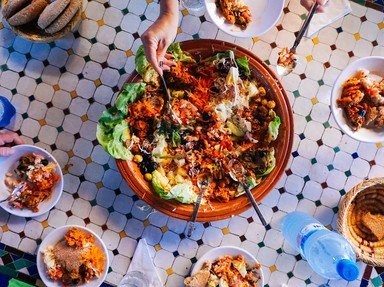Quiz Answer Key and Fun Facts
1. For over ninety years, Ann Turner Cook's portrait has been the symbol for what well known food product?
2. According to a report by "Money.co.uk" in June 2021, what healthy food product overtook salsa as the top selling condiment in the world?
3. Under federal regulations in the United States, how much caffeine must be removed from coffee in order for it to be labeled 'decaffeinated'?
4. There are twelve symbols stamped in the design on each side of which extremely popular sandwich cookie?
5. What color did blue replace when it was introduced to the standard package of "M&M's" candies?
6. Under standards established by the U.S. Food and Drug Administration, what is the minimum amount that a gallon of ice cream must weigh?
7. Which multiple fruit flavored ice cream with did Dolley Madison serve at her husband's inaugural festivities in 1813?
8. What percentage of whole cow milk is water?
9. What is the name of the dog on the Cracker Jack box?
10. Which company was the first to sell ground coffee in sealed tin cans in the United States? This happened in 1878.
Source: Author
ponycargirl
This quiz was reviewed by FunTrivia editor
jmorrow before going online.
Any errors found in FunTrivia content are routinely corrected through our feedback system.
